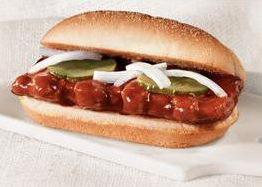 About Kangaroos. Let me make one thing clear about kangaroos: kangaroos are not domesticated animals. I mention this because in cartoons and children’s books, kangaroos are often depicted working as butlers, waiters, or prizefighters. In reality, kangaroos can do none of these things. Kangaroos cannot be trained to do useful work for human beings, like seeing eye dogs for the blind. Despite what you may have seen in cartoons, people in Australia do not employ kangaroos as household servants. Also, kangaroos cannot box, nor do they wear boxing gloves like they do in Warner Brothers cartoons. It is surprising how many people believe that kangaroos actually can box just because they have seen it in cartoons.
About Kangaroos. Let me make one thing clear about kangaroos: kangaroos are not domesticated animals. I mention this because in cartoons and children’s books, kangaroos are often depicted working as butlers, waiters, or prizefighters. In reality, kangaroos can do none of these things. Kangaroos cannot be trained to do useful work for human beings, like seeing eye dogs for the blind. Despite what you may have seen in cartoons, people in Australia do not employ kangaroos as household servants. Also, kangaroos cannot box, nor do they wear boxing gloves like they do in Warner Brothers cartoons. It is surprising how many people believe that kangaroos actually can box just because they have seen it in cartoons.Kitty Cat. Many years ago, a man applied to rent a house that I owned in Oakland. He told me that he had a cat named Kitty Cat. I had advertised that I would allow a cat. I asked the man some questions about his cat. I don’t recall exactly what he said, but whatever it was, it made me suspicious. I asked him if he had a photo of Kitty Cat with him. He said Yes. He opened his wallet, took out a photograph, and handed it to me, and that is how I found out that Kitty Cat was, in fact, a western mountain lion, also known as a cougar or a puma. I don’t know how big Kitty Cat was, but
I recall that the guy told me that Kitty Cat ate 10 pounds of horsemeat a day, every day, so it must have been a pretty big cat. Technically, the man hadn’t lied to me. A mountain lion is a cat, and I did advertise that I would allow a cat in the house; nevertheless, I turned down his application anyway. Because the man said that the mountain lion was a ‘pet’, I could do that. If he had told me that he was disabled and that Kitty Cat was a ‘therapy mountain lion’, I don’t know what I would have done. I don’t know if could have legally refused to rent to him. The man had excellent credit and lots of money. He was an heir to a famous San Francisco coffee fortune. Many years later, in 2010, Berkeley police shot and killed a mountain lion in a parking lot near Chez Panisse. Since it is now illegal to own a mountain lion in California, the police think that someone was secretly keeping the mountain lion as a pet and that it escaped. The lion appeared to be well fed and in good health. I have wondered if that mountain lion might have been Kitty Cat, but I will never know. What Is Reasonable? Under Federal law, landlords have to make ‘reasonable accommodations’ for the needs of disabled tenants. That includes the right to keep therapy and emotional support animals. The problem is that there is no list of what animals qualify. ANY animal can be a therapy or emotional support animal. An emotional support animal can be a kangaroo, a pig, a chimpanzee, an alpaca, a horse, a falcon, or even an alligator. It can be anything. You know, ‘reasonable’ is a tricky word. Every rational businessman wants to be perceived as reasonable by his customers, but who gets to decide whether or not he is being reasonable? Suppose an applicant for an apartment shows a landlord a note from his psychiatrist that says that he needs a kangaroo for emotional support. Who gets to decide whether allowing that tenant to keep a kangaroo in his apartment is a reasonable accommodation, the landlord or the man with the kangaroo? I have long believed that HUD (Department of Housing and Urban Development) should publish a list of what animals can be kept as therapy and emotional support animals. The list should be short and specific and take public health and safety into consideration. HUD has the power to do this. I believe that someday a landlord somewhere in the U.S. is going to rent an apartment to somebody with a therapy, companion, or emotional support animal that has no business being in an apartment, and that as a result, another tenant in the building or a neighbor will be killed. I think that is inevitable. When somebody is killed as a result of this irresponsible policy, HUD or Congress may finally change the rules. It’s too bad that someone may have to die first. This is a subject that I really feel very strongly about.

